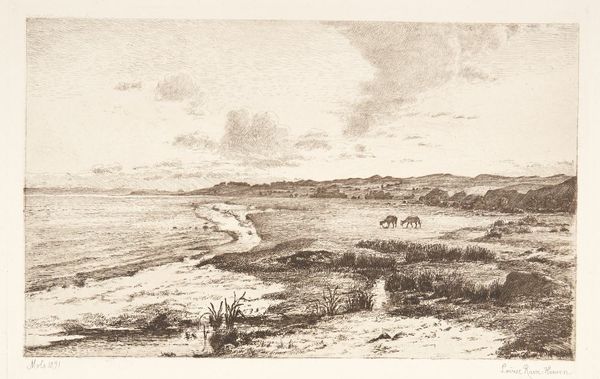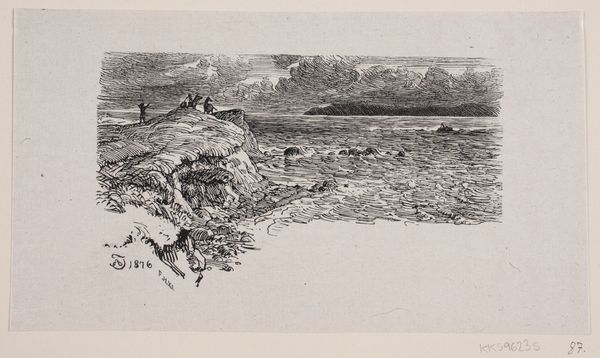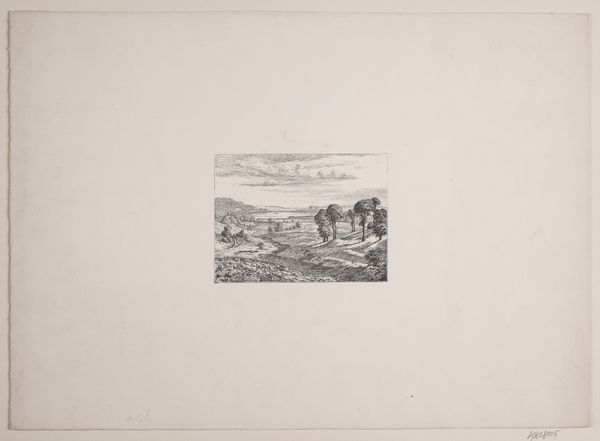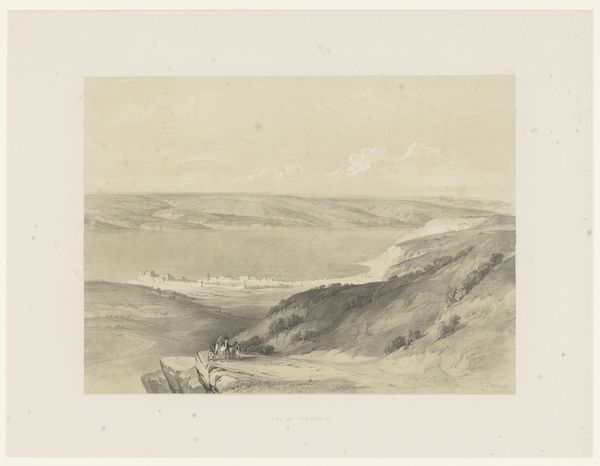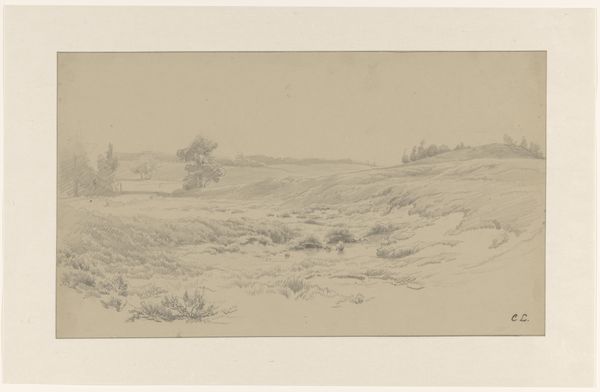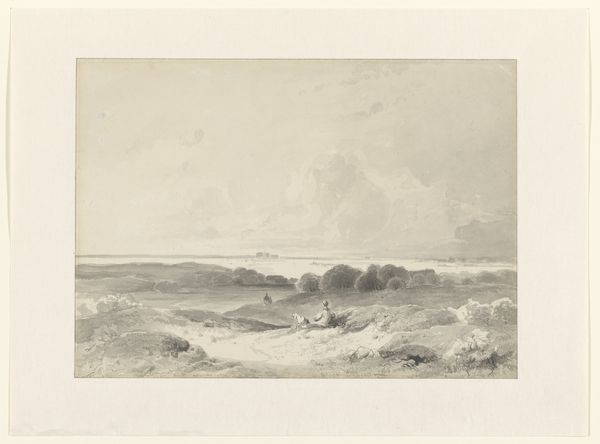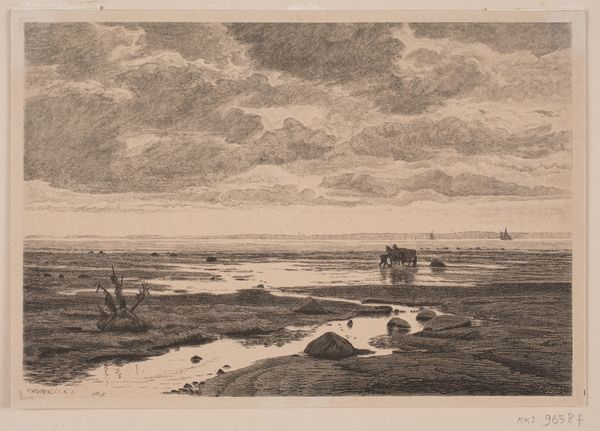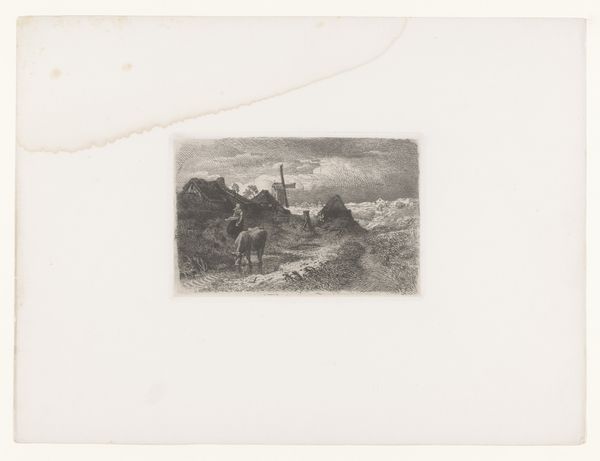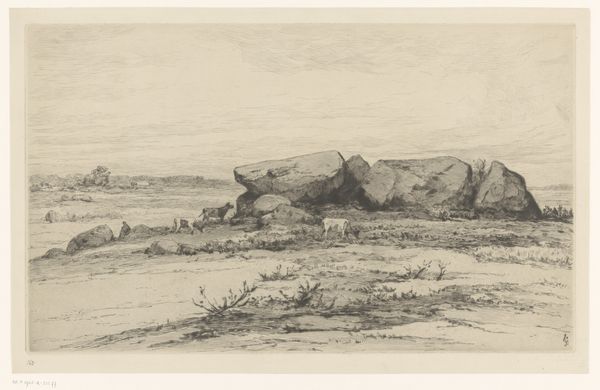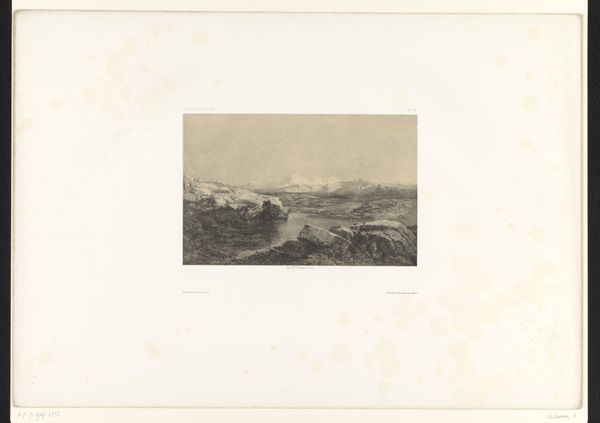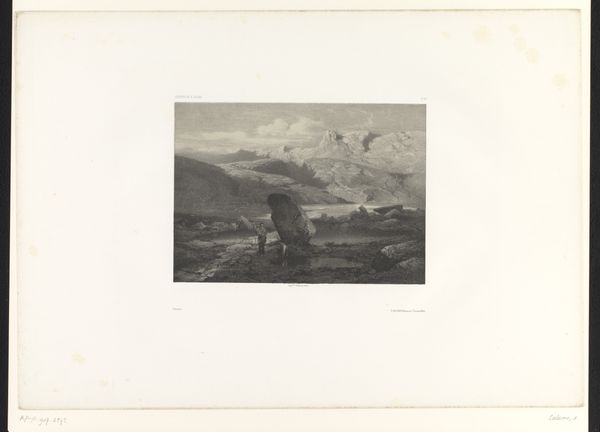
Landschaft mit KühenAus der Mappe des Kunstvereins München 1897 1897
0:00
0:00
Copyright: Public Domain
Curator: I'm immediately struck by the melancholic quiet of this scene. It's so delicately rendered, almost a whisper. A monochromatic dreamscape! Editor: Indeed. What you are seeing here is "Landscape with Cows," an etching and pencil drawing created in 1897 by Otto Ubbelohde. This piece is part of the Art Association of Munich's collection, now housed here at the Städel Museum. Ubbelohde, who's often considered a representative of the artist colony of Willingshausen, captured many similar landscapes. Curator: Cows in art always strike me as profoundly symbolic of groundedness, a connection to the land... a very German romanticism, I suppose? Here, though, they seem a bit… lost. Are we meant to feel forlorn in this open space? Editor: Well, pastoral landscapes often serve as meditations on man's relationship with nature. But consider also the historical context. Late 19th century, a rapidly industrializing Germany...This type of idyllic imagery becomes very popular as a counterpoint, almost a longing for a simpler past. Ubbelohde's decision to render this in etching, which requires such meticulous labor, is key, creating a contrast of rapid modernization with detailed artistic expression. The lone figure adds to the symbolism of solitary existence in the expansive landscape. Curator: The subtle variations of light really fascinate me. The contrast emphasizes a quiet, unassuming reality. Look at the subtle touch used in creating the cloudscape—the light, gentle pencil lines suggest volume, but not drama. Everything is balanced. Is that a farmhouse barely visible on the horizon? Editor: It is. In terms of cultural memory, landscapes have been important conveyors of identity for centuries, symbolizing power, possession, or just simple belonging. Think about the sheer number of flags adorned with symbolic geographies, of landscape elements turned into heraldic signs, cultural shorthand. Curator: Fascinating to view it with these associations. For me it is about how artists grapple with fleeting moments to preserve them as some form of collective memory. Editor: Exactly. I appreciate your perspective, providing this beautiful blend of psychological perception with these layers of cultural history. Curator: And you bring such an intriguing social historical understanding into what the image invokes in me. A real back and forth!
Comments
No comments
Be the first to comment and join the conversation on the ultimate creative platform.
